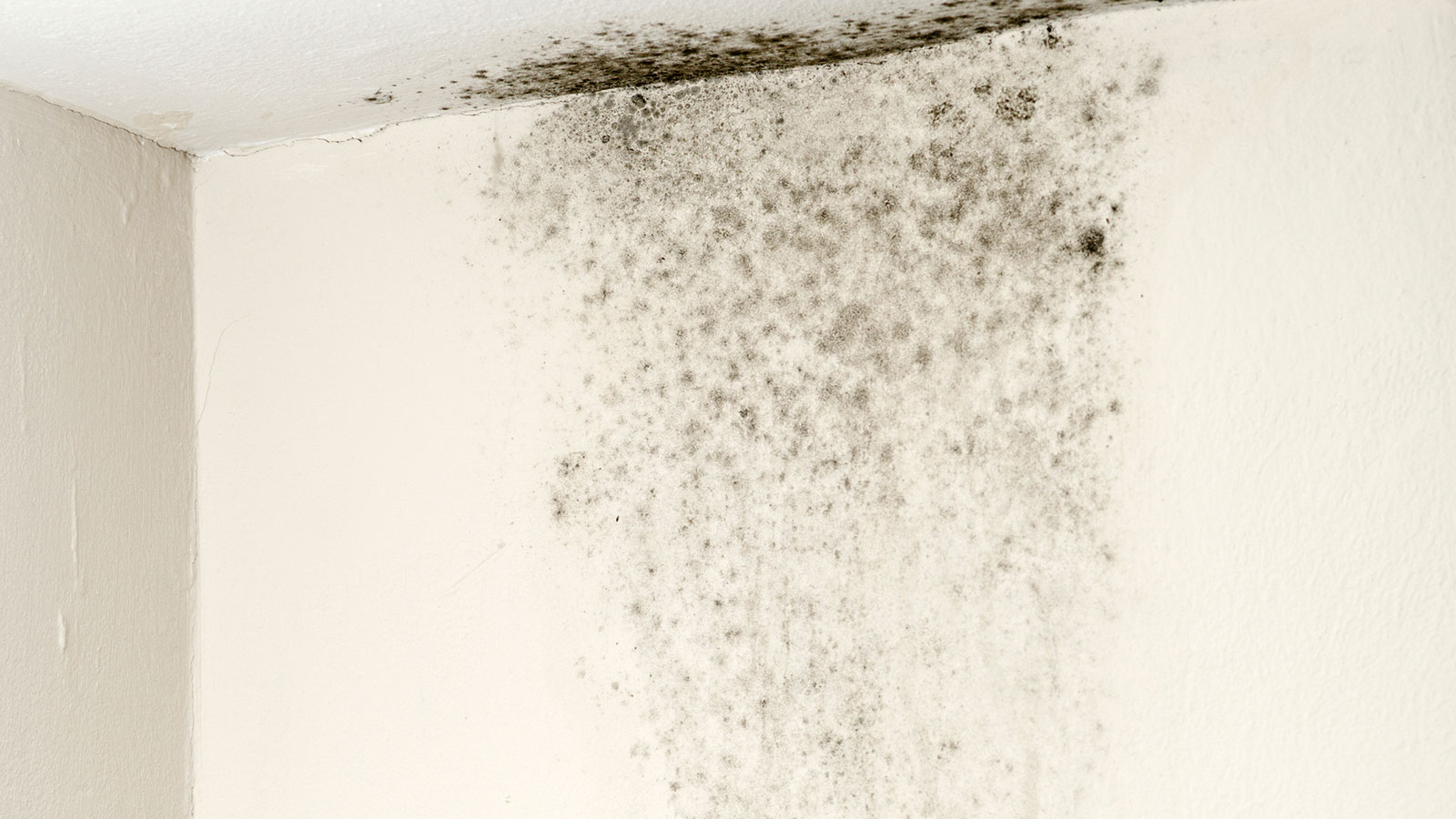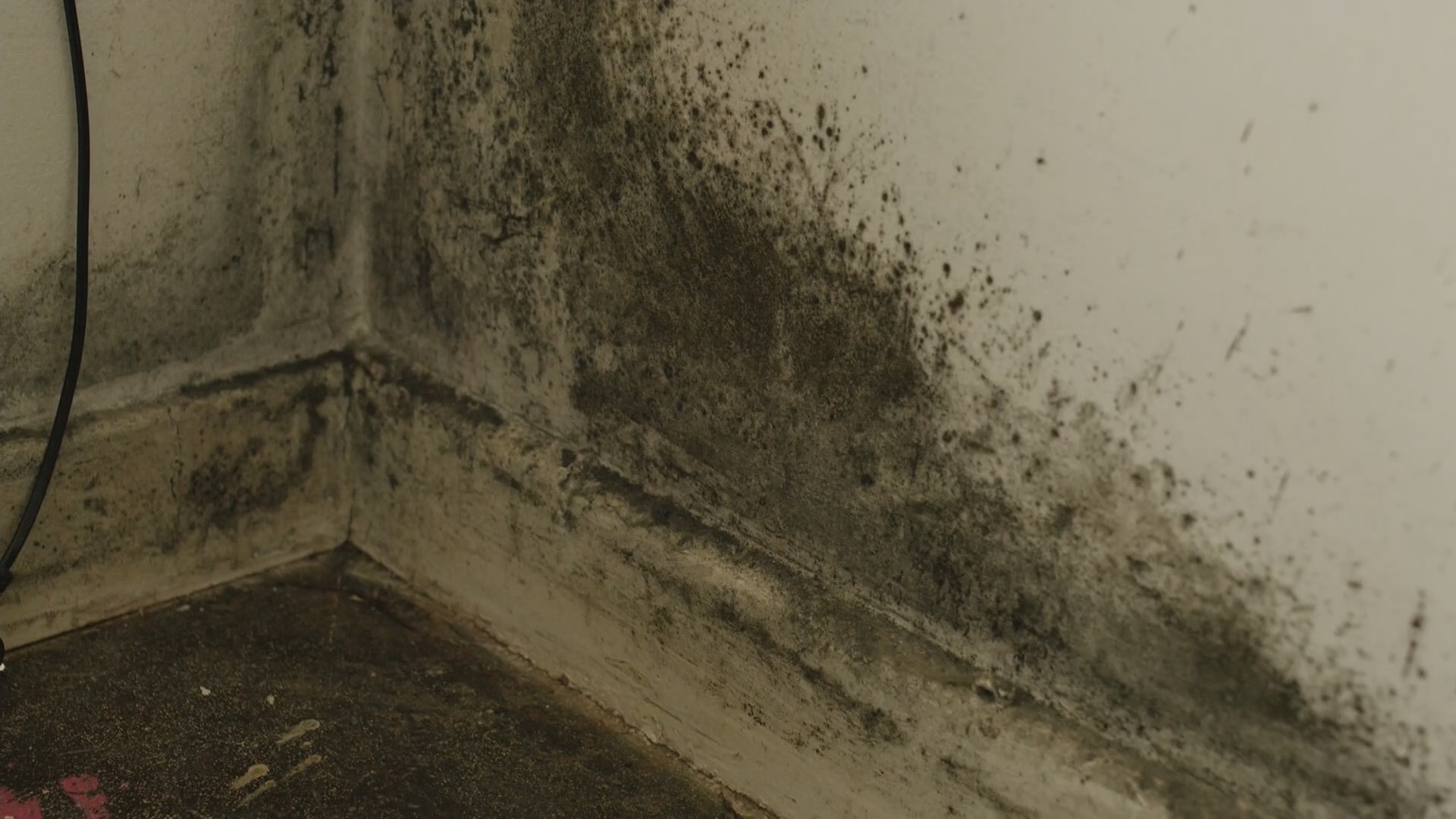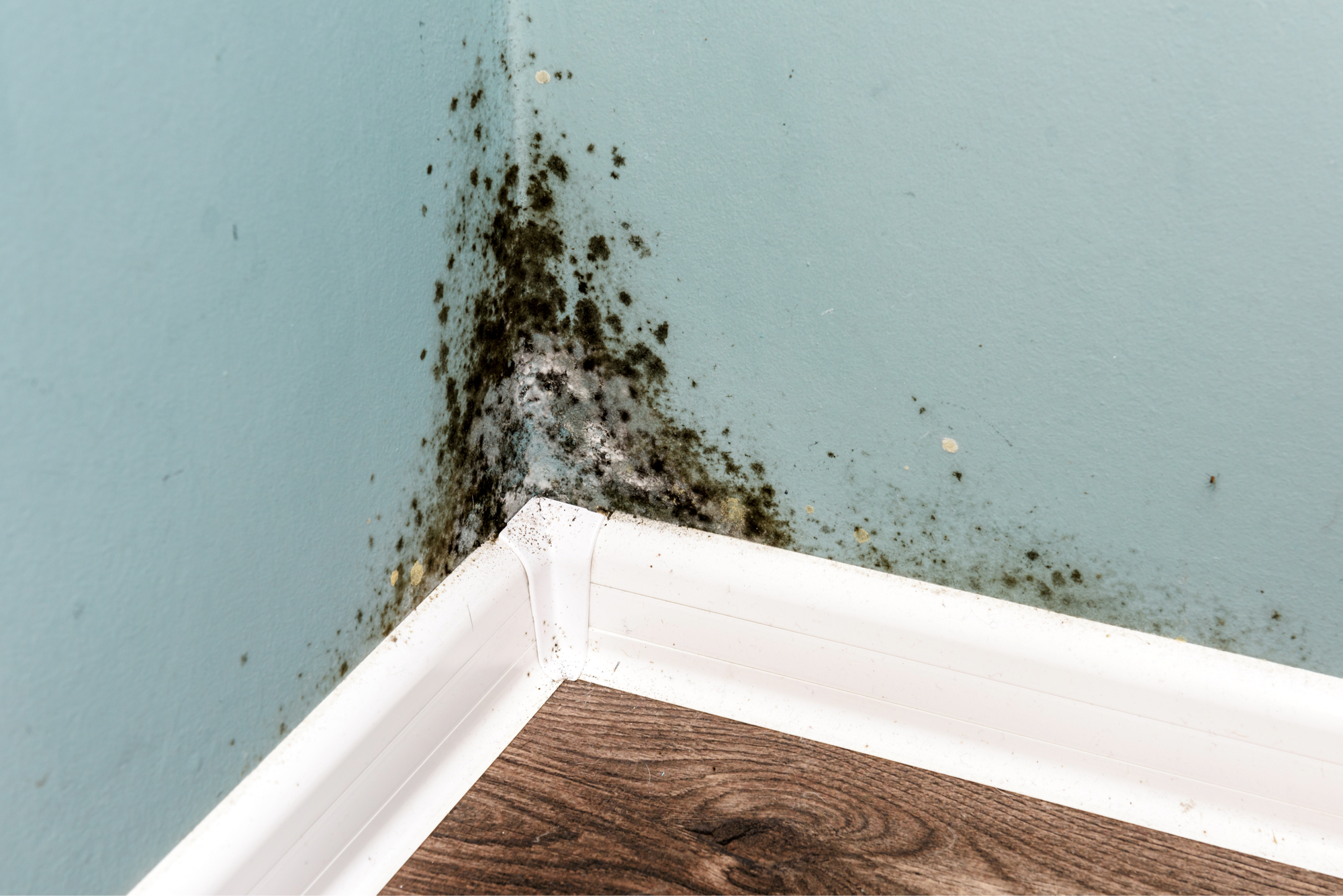Identifying Black Mold: Black Mold In My Bedroom

Black mold, also known as Stachybotrys chartarum, is a type of fungus that thrives in damp and humid environments. It can pose serious health risks, particularly to individuals with respiratory issues or allergies.
Black Mold Appearance and Characteristics
Black mold typically appears as dark greenish-black or grayish-black colonies, often with a slimy or velvety texture. It can grow in various forms, including patches, spots, or even fuzzy growths. The mold produces a musty odor that is often a telltale sign of its presence.
Common Places Black Mold Grows in a Bedroom
Black mold is commonly found in areas of a bedroom where moisture accumulates. Here are some of the most common places:
- Behind furniture: Areas behind furniture, such as beds, dressers, or nightstands, can trap moisture and provide a suitable environment for mold growth.
- Under carpets and rugs: Carpets and rugs can absorb moisture from spills, leaks, or even high humidity, creating a breeding ground for black mold.
- Around windows and doors: Condensation from windows and doors can lead to moisture buildup, particularly in areas with poor ventilation.
- In the bathroom: If the bathroom is poorly ventilated or has frequent water leaks, black mold can spread from the bathroom to the bedroom.
- On walls and ceilings: Leaks from pipes, roofs, or windows can cause water damage to walls and ceilings, creating ideal conditions for black mold growth.
Visual Inspection for Black Mold in a Bedroom
Regular visual inspection of your bedroom can help detect the presence of black mold early on. Here are some areas to focus on:
- Walls: Check the corners of the walls, particularly where they meet the ceiling, for any discoloration, patches, or fuzzy growths.
- Ceilings: Inspect the ceiling for any signs of water damage, discoloration, or mold growth, especially around light fixtures or vents.
- Carpets and rugs: Lift up carpets and rugs to check for mold growth underneath, particularly in areas that may have been exposed to spills or leaks.
- Furniture: Inspect the back and underside of furniture for any signs of mold, especially if it has been stored in a damp environment.
Causes and Prevention

Black mold, a common problem in bedrooms, can pose health risks. Understanding its causes and implementing preventative measures are crucial for maintaining a healthy living environment.
Causes of Black Mold Growth
Black mold thrives in damp environments, making bedrooms particularly susceptible due to their enclosed nature. The primary causes of black mold growth in bedrooms include:
- Water Leaks: Leaky pipes, roofs, or windows can introduce moisture into the bedroom, creating ideal conditions for mold growth.
- High Humidity: Excessive humidity in the air can contribute to condensation, providing a breeding ground for mold spores.
- Poor Ventilation: Lack of proper ventilation allows moisture to accumulate, creating a damp environment conducive to mold growth.
- Condensation: Cold surfaces, such as windows or walls, can cause condensation, particularly in poorly ventilated areas. This moisture can encourage mold growth.
Preventing Black Mold Growth
Proactive measures can significantly reduce the risk of black mold growth in bedrooms. Here’s a step-by-step guide to effectively prevent mold:
Addressing Moisture Sources
- Repair Leaks: Promptly repair any leaks in pipes, roofs, or windows to eliminate moisture sources.
- Maintain Gutters: Ensure gutters are clean and functioning properly to prevent water from pooling near the foundation.
- Inspect Appliances: Regularly inspect appliances, such as washing machines and dishwashers, for leaks.
Improving Ventilation
- Use Exhaust Fans: Utilize exhaust fans in the bathroom and kitchen to remove moisture-laden air.
- Open Windows: Regularly open windows to allow fresh air circulation and reduce humidity.
- Install a Dehumidifier: Consider using a dehumidifier in humid climates or during seasons with high humidity levels.
Maintaining Proper Humidity Levels
- Monitor Humidity: Use a hygrometer to monitor indoor humidity levels.
- Target Humidity: Aim for an indoor humidity level between 30% and 50% to discourage mold growth.
- Adjust Heating and Cooling: Ensure proper heating and cooling systems to maintain optimal humidity levels.
Removal and Remediation

Black mold infestations can pose serious health risks and require proper removal and remediation to ensure a safe and healthy living environment. While minor infestations can be addressed through DIY methods, significant infestations often necessitate the expertise of professional mold remediation specialists.
Professional Mold Removal
Professional mold removal is essential for significant infestations that extend beyond the surface level. These experts are equipped with specialized tools and knowledge to safely and effectively remove mold from various surfaces, including walls, ceilings, and flooring.
- Comprehensive Assessment: Professionals conduct thorough inspections to determine the extent of the infestation, identify the source of moisture, and assess the potential for structural damage. This allows for a tailored remediation plan that addresses the root cause of the problem.
- Specialized Equipment: Professional mold removal companies utilize advanced equipment, such as HEPA vacuums, air scrubbers, and dehumidifiers, to remove mold spores and prevent their spread. They also employ specialized cleaning agents and techniques to effectively remove mold from porous materials.
- Safety Precautions: Professional mold removal specialists prioritize safety by wearing protective gear, such as respirators, gloves, and protective clothing, to minimize exposure to mold spores. They also follow strict protocols for handling and disposal of contaminated materials to prevent the spread of mold.
- Preventative Measures: After removing the mold, professionals implement preventative measures to prevent future infestations. This may involve addressing moisture issues, improving ventilation, and sealing cracks and gaps in walls and floors.
DIY Mold Removal
Minor black mold infestations can often be addressed using DIY methods, but it is crucial to prioritize safety and take necessary precautions.
- Safety Precautions: Wear a respirator mask, gloves, and protective clothing to minimize exposure to mold spores. Open windows and doors for ventilation. Protect your eyes with safety goggles. Avoid using bleach on porous surfaces, as it can react with mold and release harmful chemicals.
- Cleaning Solutions: Effective DIY cleaning solutions for mold removal include:
- Borax: A natural cleaning agent that inhibits mold growth. Mix 1 cup of borax with 1 gallon of warm water and apply to affected areas.
- Vinegar: A natural disinfectant that can effectively kill mold. Mix equal parts vinegar and water in a spray bottle and apply to affected areas. Let it sit for 30 minutes before wiping clean.
- Tea Tree Oil: A natural antifungal agent with strong antibacterial properties. Dilute 10-15 drops of tea tree oil in 1 cup of water and apply to affected areas.
- Cleaning Process:
- Prepare the Area: Clear the area of any furniture or belongings. Cover the floor with a plastic tarp or drop cloth.
- Clean the Affected Area: Apply the chosen cleaning solution to the affected area and scrub with a stiff-bristled brush. Rinse thoroughly with water.
- Dry the Area: Ensure the area is completely dry. Use a fan or dehumidifier to accelerate the drying process.
- Prevent Future Growth: Address the source of moisture, improve ventilation, and seal any cracks or gaps in walls and floors.
Mold Remediation Methods, Black mold in my bedroom
| Method | Effectiveness | Cost |
|---|---|---|
| Professional Mold Removal | Highly effective for significant infestations | High (depending on the extent of the infestation) |
| DIY Mold Removal | Effective for minor infestations | Low |
| Bleach Solution | Effective for killing mold, but can damage porous materials | Low |
| Borax Solution | Effective for inhibiting mold growth | Low |
| Vinegar Solution | Effective for killing mold and removing stains | Low |
| Tea Tree Oil Solution | Effective for killing mold and preventing future growth | Low |
